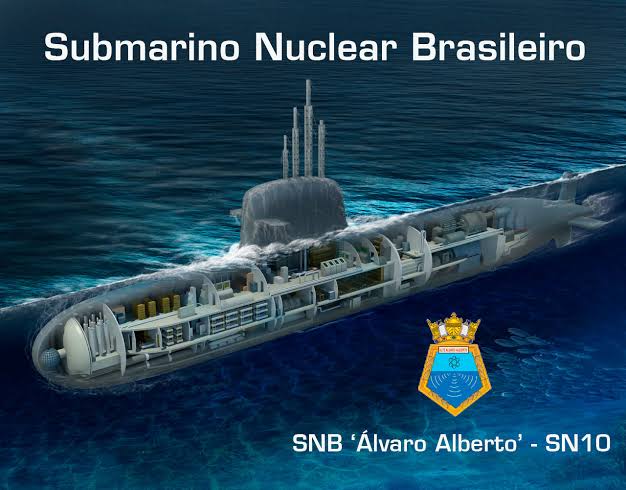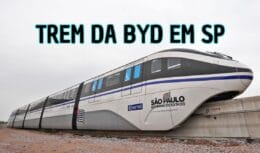
ICN and NUCLEP are moving towards another industrial leap by joining forces to manufacture the first qualification section of the SN-BR Álvaro Alberto, the first nuclear-powered submarine in Latin America.
A meeting on the afternoon of this Friday, August 2nd, between the president of Nuclebras Equipamentos Pesados (NUCLEP), Admiral Carlos Henrique Silva Seixas, and the CEO of Itaguaí Construções Navais (ICN), André Portalis, sealed yet another important advance of the National Submarine Development Program (Prosub), of the Brazilian Navy.
Accompanied by the Administrative Directors of NUCLEP, C. Alte. Oscar Moreira Filho, and Industrialist from ICN, Carlos Adolpho, the two started negotiations for the construction of the Qualification Section of the Nuclear Propulsion Submarine Álvaro Alberto. The part will allow engineers, technicians and workers to carry out their activities, in the testing phase, before applying them definitively in the sections that will be built for the SN-BR.
With French technology, the most modern in this market, 100 meters and a displacement of 6 thousand tons, the SN-BR will be the first nuclear-powered submarine in the history of Brazil, as well as the first to be built in the Southern Hemisphere.
Brazil is one of the few countries in the world that has a project to build a nuclear submarine aimed exclusively at hunting other submarines, which will not carry ballistic missiles.
Prosub: Tupi, S-BR and SN-BR comparison
Autonomy – One of the information released by the Itaguaí Naval Complex is the considerable difference in autonomy between the S-BR and the “Tupi” class: an increase from 45 days to 70 days. As a comparison, the original Scorpene, like the model operated by Chile, without the section added to the S-BR that made it possible to increase fuel and food capacity (in addition to improving habitability), has an autonomy of about 50 days.
Regarding the “Tupi” class, the S-BR will be able to sail up to 13.000 miles (with snorkel), against 10.000 nautical miles. In the case of the SN-BR, due to the nuclear reactor that can produce energy for several years before the exchange of nuclear fuel elements, the limit to its autonomy is given by the resistance of its crew and the duration of the food transported on board, and not by the fuel (diesel) transported in the tanks, as is the case with conventional ones.
Speeds – The maximum snorkeling speed of the S-BR and the “Tupi” class is greater than 11 knots, according to the table.
SN-BR port – Regarding the nuclear submarine, its size first draws attention: with a total length greater than 100 meters and an internal diameter of the resistant hull greater than 9 meters, the displacement of the SN-BR is projected at approximately 6000 tons when on the surface, and 6.500 tons in immersion. These numbers are similar to those of the US Navy's acclaimed "Los Angeles" class of nuclear submarines.
Petrobras boosts its profits by focusing on ultra-deep water exploration








